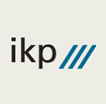Develop new target groups through accessible websites
The relevance of accessibility on the internet has already been recognised by official Austria: Since 2004, accessibility in the sense of international standards has been required in public authority websites. For companies, too, a consciously barrier-free website design brings numerous advantages and can help to open up new target groups. At the same time, a clear commitment to the inclusion of people with special needs also contributes to a positive image as an employer or business partner.
In a globalised and digitalised world, a professionally designed website has become the be-all and end-all of a company’s success in many areas. The online presence serves to reach one’s target groups, to inform them and to motivate them to make contact or to cooperate. In order to fulfil this function effectively, many factors need to be taken into account.
Overstimulation as a challenge
It is not uncommon to try and fit as much and as complex information as possible into the limited space available on one’s website. This approach has visual disadvantages and at the same time can significantly limit its accessibility for some groups of the population. On the one hand, this is due to the fact that people are inundated with stimuli in their daily lives – sometimes to such an extent that the brain can no longer process them effectively and important information is sometimes lost.
In addition, websites with barriers pose further challenges: for example, people with different first languages naturally find it more difficult to understand complex content on German-language websites. They also cause significant problems for people living with disabilities, as well as neurodiverse and elderly people. Without accessibility on the web, a significant part of society can hardly be reached.
Inclusivity is key
On the internet, in addition to understandable, inclusive language, factors of the graphic design are also relevant, all of which can have an influence on the accessibility of the website. Just like the non-discriminatory use of language, a consciously accessible design of one’s own online presence can also support companies in gaining new customers and partners. Accessible website design is therefore an important cornerstone of holistic inclusive access to communication.
Learning from experts
When designing an accessible online presence, the WCAG or “Web Content Accessibility Guidelines” offer guidance. Specialised communication agencies and organisations can also help: WACA, the Association for the Promotion of Accessibility in Information and Communication Technology, certifies accessible websites.
A best practice in the field of accessible website design is, for example, the homepage of the ÖZIV Bundesverband, the Austrian interest group for people with disabilities, where important information is also offered in understandable language.
Living inclusivity in all areas of life ultimately creates enormous added value both for the respective company and for society as a whole. The deliberate barrier-free design of one’s own online presence is only one of the many ways to contribute to this.
Sources:
1https://www.bmf.gv.at/themen/digitalisierung/Digitales-Oesterreich/Barrierefreies-Web—Internetzugang-f%C3%BCr-alle.html; https://www.wko.at/branchen/information-consulting/werbung-marktkommunikation/barrierefreie-websites.html
2https://www.w3.org/Translations/WCAG20-de/
4https://www.oeziv.org/in-verstaendlicher-sprache
© Foto von John Schnobrich auf Unsplash












